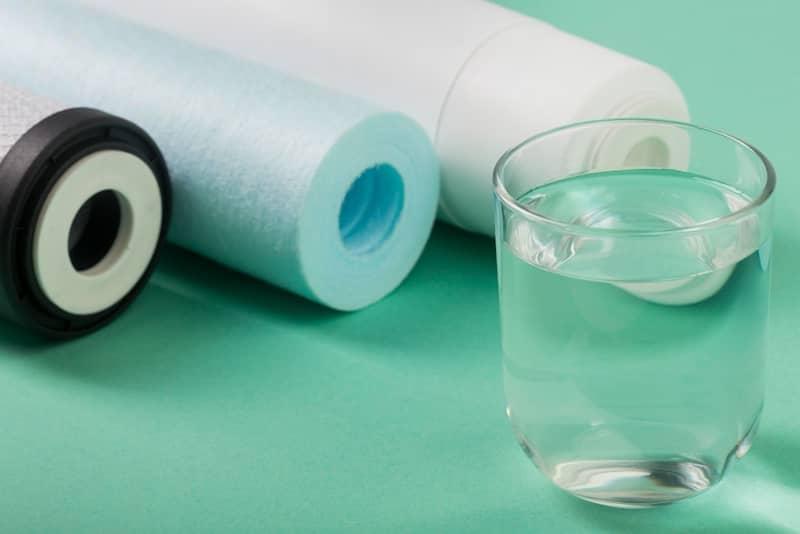Your Guide to Maintaining Your Reverse Osmosis System

There are a million reasons to love your reverse osmosis system, and the easy maintenance schedule is one of them. Once you’ve experienced clean, fresh, delicious water fresh from your tap, you will never want to go back.
The good news? Maintenance is simple and painless for these home water treatment systems. Keeping your drinking glass filled with perfectly fresh water only takes a little upkeep, and it is well worth the energy for the reward of tasty water. Protect your investment by taking the time to perform the maintenance needed to keep your system functioning at optimal levels.
There are a variety of reverse osmosis water filter systems on the market, and each individual system will have unique features and functions. Consult with your water professional or reference your manual for information on maintaining your specific reverse osmosis system. While the execution may vary slightly, there are some general time frames you can plan on to keep your reverse osmosis system in tip-top shape.
Reverse Osmosis System Maintenance
The hardest part of reverse osmosis maintenance is remembering to do it. The best way to remember is to set an alert in your calendar when maintenance is due. Digital reminders are a convenient way to help you remember to change your filters and get services performed on time.
Reverse osmosis maintenance can typically be taken care of all at the same time. A few variables will impact the lifespan of the filters and membrane in your reverse osmosis system. Using a water softener in your home will significantly lengthen the interval between maintenance services. The hardness of your water, the amount of water you use, and your specific system will all be factors that help determine how often you should replace these filters. When in doubt, ask a professional, but stick to this rule of thumb at the very minimum.
Reverse Osmosis Maintenance Frequency:
If you also use a water softener system:
● Every 12-18 months: replace filters, drain the tank, and sanitize the system.
● Every 3 years: membrane replacement
If you don’t use a water softener system:
● Every 6-9 months: replace filters, drain the tank, and sanitize the system
● Yearly: membrane replacement
Replace Filters and Membrane
The filters your reverse osmosis system uses are crucial to maintaining its performance. As your water journeys through your reverse osmosis system, it travels through a series of filters and, eventually, the semi-permeable membrane to achieve a perfect result. Every component of the system relies on this series of filters in order to function as intended. Maintaining your reverse osmosis filters is the key to allowing each component to accomplish its role.
Filters that are left unchanged can put stress on other parts of the system and cause a breakdown in the process. For example, your pre-filter is crucial because it filters out chemicals like chlorine. If chlorine was allowed to proceed into the system, it would break down the semi-permeable membrane filter, which is the crux of the reverse osmosis process. Problems like this one are easy to avoid by staying on top of your filter maintenance. It is an easy way to maximize the performance of your system.
Staying on top of filter replacement is the best way to keep your water fresh and lengthen the lifespan of your system. It will keep your entire system running efficiently. The water flowing from your tap will be perfect as a result.
Drain the Tank
Draining your tank takes just a few minutes and can coincide with your yearly filter replacement. The process is simple and requires that you drain your tank and let it fill back up.
Draining your reverse osmosis tank is vital for a few reasons. First, it ensures you are achieving adequate pressurization of your system, which is a crucial part of the reverse osmosis process. Second, draining the system will eliminate any water that has been sitting in the bottom of the tank for an extended period of time. Water left to sit in the tank can become stale or slimy. By regularly draining your RO tank, you will be drinking the freshest possible water.
Sanitize
To really keep your system clean and fresh, it’s important that it goes through a sanitizing process every time you service your system. While it is the most involved maintenance your reverse osmosis system will need, it is still a very simple and straightforward task.
To sanitize a reverse osmosis system, you will send hydrogen peroxide through the tubing that runs throughout the system. This will sanitize all of the internal components that come in contact with your water.
Consult with an expert about the specific sanitizing process for your system. While any homeowner can sanitize their system, a water system professional can also perform this service if you prefer to have your system serviced by an expert.
Your reverse osmosis system will work hard for you; all it needs is some periodic attention to keep running smoothly. As with all things related to water, your local water expert is a wealth of knowledge about the water in your local area. With all of the variables at play, consulting an expert who understands the intricacies of your local water supply and how it works with the system you use can make all the difference.


